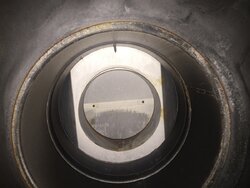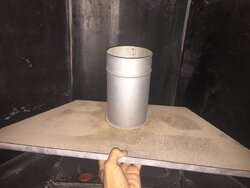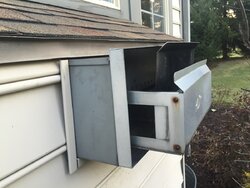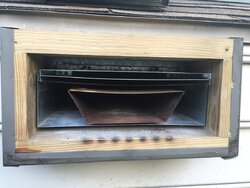Hi
I have a Heatilator GNDC36L fireplace... I think around 20 years old. Direct vent, top vent with horizontal exhaust through outside wall.
The pilot lights up and burns fine indefinitely. The main flame, however, will only burn reliably with the front glass door ajar (If just loosen the retaining knobs the front glass leans open about an inch).
If I shut the glass door tight, within 30 seconds the flame turns blue and starts lifting and within a couple of minutes it just shuts off - pilot and all.
I have checked the vent for blockage, but I cannot see a problem.
How does the venting actually work? Where does fresh air come in from? It seems like it is a double walled vent. Is it safe to run the fire with the glass front ajar?
I have a Heatilator GNDC36L fireplace... I think around 20 years old. Direct vent, top vent with horizontal exhaust through outside wall.
The pilot lights up and burns fine indefinitely. The main flame, however, will only burn reliably with the front glass door ajar (If just loosen the retaining knobs the front glass leans open about an inch).
If I shut the glass door tight, within 30 seconds the flame turns blue and starts lifting and within a couple of minutes it just shuts off - pilot and all.
I have checked the vent for blockage, but I cannot see a problem.
How does the venting actually work? Where does fresh air come in from? It seems like it is a double walled vent. Is it safe to run the fire with the glass front ajar?






